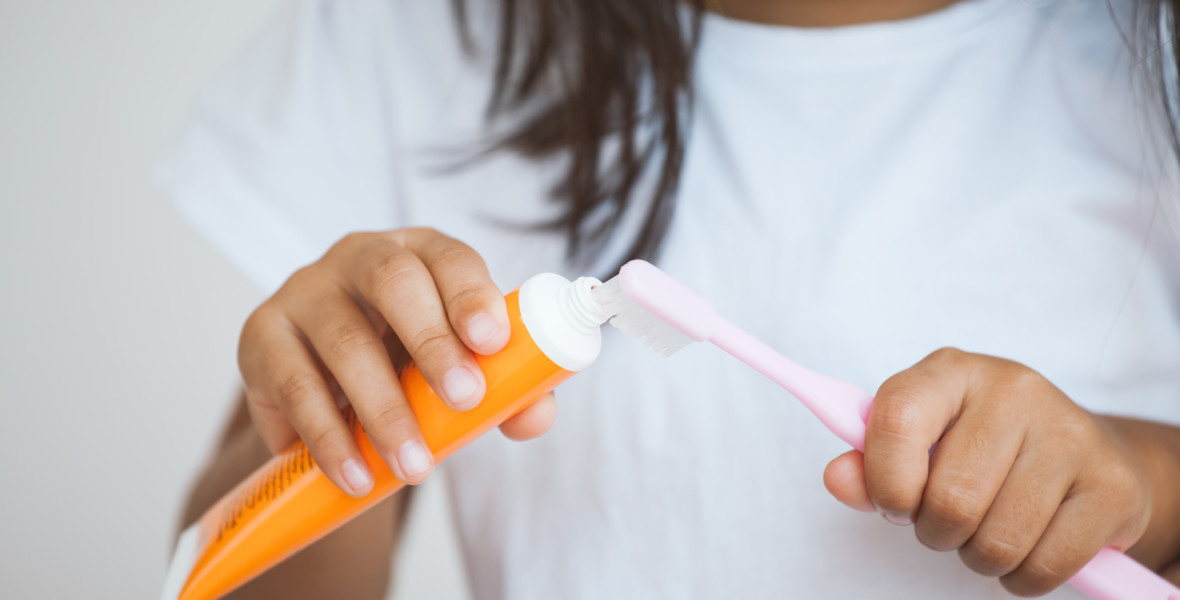Biodiversity
Can fluoride affect children’s development?

You probably already know that fluoride prevents tooth decay. Yet a number of alarming messages are circulating about the negative impact of the substance on children’s health. What’s really true, and what should we make of the fluoride issue? In a new project, researchers intend to find out.
Prenumerera på Extrakts nyhetsbrev!
Läs mer
Håll dig uppdaterad! Få kunskapen, idéerna och de nya lösningarna för ett hållbart samhälle.
Personal data is stored only for the mailing of Extrakt newsletters and information related to Extrakt’s operations. You can cancel the newsletter at any time, which means you will no longer receive any emails from us
We get fluoride in our bodies through naturally contaminated drinking water, bottled water, food (like table salt, fish and tea) and various dental products. A limited amount of fluoride promotes dental health and protects against tooth decay. But high levels can have harmful effects on teeth and bones.
“In areas with naturally high levels of fluoride in the drinking water, like in some parts of China, you can see that it creates yellow spots on teeth,” says Maria Kippler, researcher at the Institute of Environmental Medicine at Karolinska Institutet.
In other countries, for example in the United States, fluoride is added to drinking water to promote dental health. The World Health Organization’s – and Sweden’s – guideline value for fluoride in drinking water is 1.5 mg per litre.
Many people have municipal drinking water in Sweden, so there is good control over the fluoride content. Almost all municipalities fall below the WHO guidance values.
Is fluoride harmful?
Control is worse in private water wells, and Kippler suspects that they might contain higher levels of fluoride.

Maria Kippler, researcher at Karolinska Institutet. Photo: Anna Persson
“It’s voluntary to submit water from your own well for analysis. Testing your water is expensive and many results are not reported.”
But what’s the real low-down on fluoride? A quick internet search sheds light on the debate. There is an unmistakable suspicion of its harmful impact on our health – especially our children’s health. What evidence is available that fluoride is harmful?
“The scientific evidence is still very uncertain. But despite this, information has spread through social media and caused great concern especially among parents.”
Creating concern among parents
It is difficult to determine whether the concern is unwarranted, but new research suggests that exposure to fluoride early in life can negatively affect the nervous system. Some of the effects mentioned include lowered intelligence and altered behaviour.
“Right now, there are no Swedish studies that have measured exposure to fluoride either in children or in their parents. Therefore, there is a great need for more research on exposure and the possible negative side effects of fluoride,” Kippler says.
Yet tooth decay is increasing in young children, so anxious parents face a dilemma. Kippler and her colleagues want to remedy this in a new project. Their overall aim is to clarify whether, and in such cases how, exposure to fluoride early in life affects children’s development and health.
Weighing risk against benefit
The researchers initiated a study involving roughly 650 mothers and their children. The study measures the amount of fluoride in the urine of pregnant women and their children at four months and four years of age
The children will also be followed up to the age of four in order to measure a variety of parameters: cognitive ability, behaviour, immune system development, allergies and growth.
“We’ve collected samples from the mothers, and we can already see that only a few have a higher concentration than the threshold. Our next step is to find out where these elevated values come from. Is there anything in the drinking water, anything else they’re drinking or eating? We know, for instance, that many pregnant women drink a lot of mineral water, which can contain a relatively high amount of fluoride.”
The results can provide decision support for scientific advice and recommendations for public authorities like the Swedish National Food Agency, Swedish Medical Products Agency, National Board of Health and Welfare, and Swedish Environmental Protection Agency.
“It’s about weighing risk against benefit. If fluoride is good for one particular health aspect but dangerous for another, then we’ve got to understand more,” Kippler says.
ABOUT THE PROJECT
The project, En viss mängd fluor är bra för barns tandhälsa men tycks kunna störa barnets övriga utveckling (“A limited amount of fluoride promotes early-life dental health but may adversely affect child development”), has been awarded 3 million kronor by the Swedish Research Council Formas. Its overall aim is to determine how exposure to fluoride early in life can affect children’s development and health.
This topic will be studied with the help of roughly 650 mothers and their children in a new study in Norrbotten, Sweden. Exposure to fluoride will be determined by measurements of the urine of the mothers during pregnancy and of the children at 4 months and 4 years of age. The fluoride levels in the urine will then be correlated with detailed dietary data (using repeated questionnaires) to identify sources of elevated fluoride levels in the urine.
The researchers will also investigate whether there are any links between fluoride exposure and the following:
• Children’s cognitive abilities and behaviour at 4 years of age
• The development of children’s immune systems and the development of allergies
• Birth outcomes (birth weight and premature birth) and growth up to 1 year of age.








